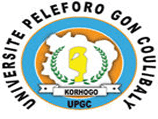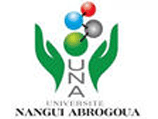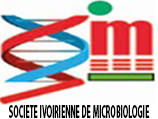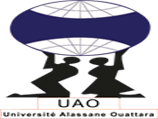Plenary lecture

Beneficial soil microbes provide important ecological services to natural and agricultural ecosystems, and their potential to positively influence agricultural productivity has made harnessing them a major goal of environmental and agricultural biotechnologies. This task is challenging due to the complex microbial diversity and functional diversity found in soil, as well as the relatively limited knowledge base in this sector. However, certain groups of soil microorganisms, such as endophytes and arbuscular mycorrhizal fungi, have developed close symbiotic relationships with plants over their evolutionary history, thus forming meta-organisms or holobionts. We have reported technological approaches to optimize microbial domestication/manipulation and exploit the power of these biological systems. Despite the challenges, industrial activities geared at producing and commercializing beneficial microorganisms to enhance plant productivity are being developed. In this presentation, we will discuss how microbiome manipulation in agroecosystems can provide insight into sustaining crop production and reducing greenhouse gas emissions, and how certain crops can impact the community of beneficial microbes naturally occurring in cropping systems, monocultures, or diversified rotation systems.
Seminar 1: Soil, Plant and food/beverage Microbial Ecology in the omics age

Xanthomonas fragariae is a quarantine organism in Europe, causing angular leaf spots on strawberry plants. It is spreading worldwide in strawberry-producing regions due to import of plant material through trade and human activities. To understand the biology of this species, we have employed high-resolution molecular typing tools on a comprehensive strain collection representing global and temporal distribution of the pathogen. For this, the genomes of 58 X. fragariae strains from our collection were sequenced and used in order to assess relevant information on taxonomy, genome structure, evolution, diversity and virulence. In the talk, I will show outcomes from the use of the different -omics technologies to shed light on the above factors.

Key roles played by bacteria in ecosystem servicing have led to a number of microbial diversity studies initiated at both local and international scales. However, most of these studies were previously carried out in Northern Hemisphere regions and little was known regarding the composition of soil microbiomes in sub-Saharan Africa in terms of abundance, prevalence, and functionality. Thus, through the African Soil Microbiology Project (AfSM), we were able to investigate the microbial community of forty-five soils from Côte d'Ivoire collected across five agro-ecological biomes from the north to the south. Using sequencing performed with the Illumina MiSeq platform targeting the V4-V5 region of the 16S ribosomal RNA gene, we obtained a global classification of the different groups of bacteria living in our soils. Among the total of 1234 genera identified, ten non-phytopathogenic including the well-known Bradyrhizobium, Gaiella, and Gp6 were revealed to be widely present in all soils with an occurrence of 100% and more than 0.5 of a relative abundance. Most of unknown bacteria were found to be highly represented in the northern region of the country, dominated by the savannah. Although some variables such as pH, latitude, potassium, and aluminium significantly influenced (p <0.05) the distribution of bacteria in soils, evidence of their variability in abundance was concretely revealed through the combination of different environmental conditions. Predictive functions of bacteria involved on the nitrogen cycle showed that denitrification and nitrate reduction were the predominant activities performed by these microorganisms and were equally done in all soils. However, nitrogen fixation activity was found to be particularly higher in the south-west part of the country, where the abundance of Rhizobia was significant. These preliminary results offer ways for exploring the key roles played by bacteria in Côte d’Ivoire for an optimized management of our soils.

In tropical regions, ecosystem services provided by rhizobia include improvement of soil fertility and increase of crop yields in N-nutrient depleted soils due to their biological nitrogen fixation. Due to this importance, rhizobia have been studied in Côte d’Ivoire since 1970’s to unravel their genetic diversity, biogeography and ability to serve as bio-inoculants. In the current study, a polyphasic strategy incorporating results from a review of published data from 1970 to 2022 and unpublished research data based on both culture-dependent (isolation from nodules) and culture- independent (sequencing from soil DNA) methods was used to get insights into the ecology of rhizobia in Ivorian soils. The study revealed that the genetic diversity of rhizobia were poorly deciphered in Côte d'Ivoire until 2010’s despite some pioneering works. In contrast to this period, rhizobia have been extensively characterized over the last decade. A high-throughput amplicon sequencing analysis of the 16S rRNA gene (V4-V5 region) from soils collected from all the country biomes revealed that the soils harbored 12 out of ca. 20 genera of rhizobia species known worldwide to date. They consist of nine genera of α-rhizobia and three genera of β-rhizobia. In spite of such important genetic diversity in soils, the infective rhizobia isolated from nodules of diverse legumes (Cajanus cajan, Glycine max, Vigna spp., and Acacia spp.) belong exclusively to Bradyrhizobium. Phylogenetic and genomic analyses suggested that most of these isolates belong to species pertaining to B. elkanii and B. japonicum superclades, and to six putative novel species. Symbiotic effectiveness tests of 40 isolates versus commercial bio-inoculants revealed >10 highly effective indigenous isolates. Thus, exploring the ecology of rhizobia in Ivorian soils highlighted the dominance of the Bradyrhizobium genus and suggests its use to enable sustainable intensification of agriculture in Côte d’Ivoire.

Plant species vary significantly in their adaptability. Adaptation to environmental change improves plant performance in altered environmental conditions, such as drought. The numerous morphological, biochemical, and physiological alterations that drought stress induces in plants impact agricultural productivity. For instance, it inhibits root and branch growth, reduces photosynthesis and transpiration rates, generates reactive oxygen species, modifies osmotic conditions, and modifies the pathways that control leaf senescence and signal stress. Consequently, there is a greater need for environmentally sensible solutions to ensure the global food supply's security. Plant growth-promoting rhizobacteria ensure plant survival and growth during drought through various mechanisms, including increased phytohormone synthesis, antioxidant activity, and osmotic alterations. They modify root architecture, maintain high relative water content, increase photosynthesis rate, activate the antioxidant defence system, produce 1-aminocyclopropyl-1-carboxylate deaminase, exopolysaccharides, phytohormones, and volatiles, and alter the expression of stress-responsive genes. The commercial application of PGPR as bioinoculants or biostimulants will continue to necessitate the selection of more dependable strains and efficacy in challenging environmental conditions. Understanding the variables influencing plant-PGPR interactions in the soil and adaptation to environmental perturbations is crucial to our ability to predict the drought tolerance of plants. There will be a presentation on recent discoveries in the discipline and prospects.

Fermented foods appear in the human relationship with microbial environment. Human survival is strongly linked to microorganisms (yeasts and bacteria) which produce molecules of interest in food. Therefore, in many societies, the contribution of fermented foods has been central. Fermentation ecosystems can be used as an engaging educational tool to illustrate ecological concepts and lead to a more complex understanding of the ecology of human nutrition. Following recent trends in environmental microbiology, food microbiology has benefited from advances in molecular biology and adopted new strategies to detect, identify and monitor microbes in food. Sequencing technologies have deeply changed our approach to studying microbial communities in food. Our study describes recent exploitations of high-throughput sequencing applications to improve our knowledge of microbial consortia in foods, with palm wines (fermented sap of various palm trees) as a model. Indeed, in the last decade, the sequencing of target amplicons has been commonly used in our laboratories to provide a detailed picture of the microbiota associated particularly palm wines. These sequencing technologies have inevitably advanced our understanding of how to effectively utilize invaluable microbial resources to improve food quality and safety.
Seminar 2: Human and Animal Microbial Ecology

The microbiota play many important roles in livestock, such as pathogen protection, immune system development, and improving host nutrition. Chickens raised in commercial farms are unusual, in that they are normally raised without contact with a maternal hen. The development and composition of their microbiota is therefore quite different from other animals, who acquire much of their microbiota from their mother. In commercial breeds, we have found that the gut microbiota is dominated by clostridia and that many of these clostridial species are shared across European poultry farms. In contrast, maternally-raised, indigenous Ethiopian chickens are colonised by a far more diverse microbiota that varies based on climate zone. We have constructed the genomes of hundreds of novel bacterial species from both commercial and indigenous birds. These genomes encode diverse carbohydrate degrading enzymes and metabolic pathways for the fermentation of various forms of fibre, highlighting their importance in fermenting indigestible carbohydrates. Our findings demonstrate the value of conducting microbiota studies in less investigated livestock populations, and highlight the need for further research in indigenous livestock from other regions.

Klebsiella pneumoniae is an opportunistic pathogen causing serious infections in both humans and animals. It is established as one of the most notorious pathogens associated with antimicrobial resistance on a global scale. In our recent study, K. pneumoniae ST101 isolates were recovered from the blood of patients in a tertiary hospital and poultry samples in Accra, Ghana. ST101 is an emerging high- risk clone that poses significant threat to public health due to its significant potential for high mortality rates and resistance to last resort antimicrobials. The K. pneumoniae isolates were initially identified using conventional biochemical test and MALDI-TOF-MS analysis. Molecular confirmation of the isolates and detection of Crispr-Cas systems was performed by PCR using primers targeting the rcsA and the Cas genes. Antibiotic susceptibility testing was performed using the Kirby-Bauer method. Whole genome sequencing of isolates was achieved using the illumina – Miseq platform. Bioinformatic analysis was done to identify the sequence types, plasmids and markers of virulence and antimicrobial resistance. Both human and poultry ST101 isolates were multi-drug resistant as they showed resistance to commonly used antibiotics and carry several resistance genes including those pertaining to third generation cephalosporins and carbapenems. In addition, the isolates possessed the ybt gene for yersiniabactin, a vital virulence factor of K. pneumoniae's pathogenicity that helps it sequester iron. This virulence factor is assembled on the integrative conjugative element, ICEKp; and the iron-scavenging siderophore yersiniabactin ybt locus. The isolates also had high plasmid numbers, which suggests their capability to transfer resistance genes to other bacteria. In this presentation, further light would be shed on the genomics of ST101 K. pneumoniae isolates and their potential for transmission between humans and animals and how this could be mitigated using the One-Health approach.

Vibrio cholerae causes cholera, a debilitating diarrheal disease which is still a problem in a third of the world including Ghana. How V. cholerae survive varied stress conditions in the environment and the human host, to cause outbreak and spread the disease is under explored, as studies on the survival, persistence and the evolution of virulence in V. cholerae are mainly focused on horizontal gene transfer mechanisms. However, environmental persistence and the ability to cause disease requires adaptation of bacterial pathogens to stress, potentially generating more virulent variants through pathoadaptive mutations. The study investigated the contribution of pathoadaptive mutations to the survival and evolution of virulence in environmental and clinical strains of V. cholerae. Comparative genomics alongside experimental evolution under selected stress conditions including oxidative, osmotic, pH and iron limitation were performed for up to 200 days. The strains were whole genome sequenced and genetic variants were analyzed using a combination of bioinformatics tools including SNIPPY, Gubbins, Phandango, UGENE, Clustal Omega and SMART. High-throughput phenotypic microarray was then performed to investigate the influence of multiple stress on the metabolic and substrate utilization capabilities of the strains. This talk will shed light on how pathoadaptive mutations and metabolic changes contribute to the survival and evolution of virulence traits in V. cholerae exposed environmental stress conditions.
Seminar 3: Extreme Environments Microbial Ecology

Microbiomes mediate crucial ecosystem processes in terrestrial and marine environments, yet data regarding their precise responses to climate change remain limited. This knowledge deficit is especially true for understudied extreme habitats where the physical variables limit biology. In such environments, microbial communities are thought to be more important due to their ability to adapt to the depauperate and oligotrophic nature of such systems. Here, I will discuss our work focused on microbiota in the Southern Ocean. In addition to introducing our genome and gene catalogue, I will discuss key insights regarding the diversity and functional traits of microbiomes in an ocean characterized by trace element limitation. I will also highlight how the application of mesocosms (such as ocean acidification experiments) has allowed us to predict the response of microbiomes to anthropogenic change. I will conclude by discussing key questions for future research in geographically strategic marine environments.

After lava solidifies, microbes begin to colonise by obtaining energy from light or from chemical energy. They use this energy to convert carbon dioxide into organic carbon and slowly start building soil that eventually provides nutrients and growth factors for optimal plant growth. In this study, soil metagenomes from volcanic soils were analysed, representing different successional stages. Genomic similarity indices showed that several MAGs belonged to the phyla Actinobacteria, Acidobacteria, Gemmatimonadetes, Proteobacteria and Chloroflexi. Several MAGs had the form I of coxL (encoding the large subunit carbon monoxide CO-dehydrogenase). Among these MAGs, a group of Chloroflexi MAGs (Class Ktedonobacteria) were also retrieved. Very little is known about Ktedonobacteria, but some have genes encoding enzymes enabling them to survive or grow using H2 and CO gases. In my talk, I will show results showing a gradual establishment of the microbial community in volcanic soils following an eruption and that specific microbial groups can colonize during the early stages of recovery.

Antarctica harbors some of the most extreme environments on earth. Antarctic terrestrial and aquatic environments are typically oligotrophic and dominated by psychrophilic and psychrotolerant microbial communities. There is some evidence that the diversity and function of these cold-adapted communities may be driven by extreme abiotic pressures and complex biotic interactions. The microbial communities in these primordial hyper-arid soils provide critical information regarding the occurrence of natural antibiotic resistance, predation-prey associations, and host immunity systems. We identified the natural diversity of antibiotic resistance genes from these sites which have no known exposure to anthropogenic antibiotics, are accessible to a few researchers, and can be validly considered to be ‘antibiotic naive’. Antibiotic resistance is found to be transferred vertically over generations, with limited to no horizontal movement between species. We conclude that phage-host interactions play an active role in shaping the structure of edaphic microbial communities in these environments and further provide insights regarding host innate and adaptive immune systems in these soils.

Viruses influence the diversity and composition of marine microorganisms, including bacteria, archaea, and eukaryotes. Although they are increasingly recognized as primary mediators of nutrient and energy cycling in the oceans, we lack clear insights regarding the extent to which viruses may alter metabolic processes of their hosts. The role played by viral auxiliary metabolic genes (AMGs) in the acquisition of nutrients through directly influencing the biogeochemical recycling of sulphur and nitrogen has recently become the subject of extensive studies. However, comparatively less is known regarding the diversity, biogeography, and ecological relevance of viral AMGs in other oceanic regions, including the South Atlantic (SAO) and Southern Indian Oceans (SIO). Here, I will provide insights regarding the potential effects of nutrient limitation and roles played by viruses in response to these conditions in the SAO. As part of my synthesis, I will further share results from our studies showing the first data regarding the diversity and phylogeny of ssDNA in deep waters of the SIO. The presentation will also detail how these may represent a diverse assortment of previously unknown ssDNA viruses.
Seminar 4: Marine and Surface Water Ecology and environmental restoration

Phototrophic members of the Chloroflexota phylum are enigmas in the evolution of phototrophy because of their unusual photosynthetic reaction centre and antenna complex pairing. Through a “failed” cultivation experiment from an iron-rich Boreal Shield lake, we recovered and characterized a novel species, “Ca. Chlorohelix allophototropha”, with unexpected features relevant to the evolution of phototrophic bacteria. This talk will present genome, physiology, and ecology data to demonstrate that this phylogenetically distinct phototroph can be among the most active populations in illuminated anoxic waters of Boreal Shield lakes, which number in the millions globally.

Viruses are the most abundant biological entities in the oceans, and key drivers of marine ecosystems. Thanks in part to several large scale marine expeditions we are beginning to understand the distribution, and biodiversity of viral communities in most global oceans. However, we lack comparative mechanistic insights regarding the drivers of viral diversity and function in important ecosystems such as the Agulhas Current and the Southern Ocean. These marine environments play a crucial role in climate change mitigation and, as pivotal constituents of the biological pump, viruses are central mediators of ecosystem services in these regions. Here, we assess viral diversity and potential biogeochemical function within the vicinity of these regions. We retrieved a total of 47 698 dsDNA viral operational taxonomic units (vOTUs) from the epipelagic water samples. Viral protein cluster analysis suggests that the majority of vOTUs included members of unknown family lineages (64%), although some viruses clustered with Synechococcus (51%) phages, Prochlorococcus phages (21%), and Pelagiphages (4%). In this viral dataset, 5625 Auxiliary metabolic genes (AMGs) were annotated and classified into 206 KEGG orthologous groups. We found a high abundance of genes involved in sulfur metabolism in the Epipelagic zone, surprising given that many microbes rely on photosynthesis as their primary energy source in this zone. Additionally, the study found a significant presence of CysH genes (94) involved in sulfur metabolism in the Epipelagic zone, which is unexpected as these genes are typically associated with deep waters. aprB gene was also found in our viral dataset which, to the best of our knowledge has not been identified in viruses before. Overall, this study provides valuable insights into viral communities in an understudied region of the ocean and highlight their crucial role in the biogeochemical cycling of sulfur.

Anthropogenic disturbances such as crude oil pollution result in colossal damage to the soil ecosystem thereby hampering useful ecological processes and derivable benefits in this environmental medium. The terrain of the Niger Delta Region Nigeria is such that the deleterious effects of decades of oil pollution have caused serious public health and environmental problems. Huge expanse of arable lands that have been rendered barren with lost ecosystem services are very unpleasant sights to behold in this region. As such, food security and sources of livelihood of the peasant inhabitants of this rich agrarian haven have been greatly affected. Globally, soil health is a topical issue owing to the fact that plant growth and food production depend mainly on the edaphic environment for sustainability and as such soil is a living resource, home to more than 25% of the Earth’s biodiversity according to FAO (2020). Bioremediation which relies on microbial versatility in substrate utilization is an eco-friendly, cost-effective and acceptable treatment option very suitable for the tropical soils with abundance of rainfall and rich microbial diversity for the removal of petroleum contaminants through the biochemical activities of indigenous hydrocarbon degraders. Usually large inputs of petroleum hydrocarbons into the soil results in essential nutrient depletion especially the biogenic ones like nitrogen, oxygen and phosphorus critical to sustenance of soil biodiversity. Addition of chemical fertilizers to stimulate microbial growth in polluted environmental media usually leaves undesirable outcomes such as chemical overdose. But in recent times with the UN global drivers and advocacies for ecosystem restoration through the use of natural resources and processes to halt, reduce and reverse the negative impacts of human activities on the environment as enshrined in the UN SDGs, it has become pertinent that nature-based solutions (NbS) be used in mitigating the impacts of oil-pollution on the soil ecosystem. Thus, the research outputs presented showcase bioremediation projects at the pilot and field-scale levels using NbS such as valorized plant biomass, poultry litter and virgin top soil to stimulate microbial degradation of crude oil hydrocarbons in impacted soil ecosystem with full biodiversity and ecosystem restoration post-remediation. Microbial analyses were done with molecular biology techniques such as Sanger and 16S amplicon sequencing techniques to elucidate the microbial community composition and structure following treatment while physicochemical parameters linked with both biotic and abiotic factors underpinning contaminant dissipation were determined using standard analytical methods. In all, biodiversity recovery was evident by robust vegetation, rewilding, microbial diversity and improved soil health..
SEMINAR 5 : Microbial community probing

Isoprene is a climate-active, organic compound that is released into the atmosphere in similar quantities to that of methane, making it one of the most abundant trace volatiles. Large amounts of isoprene are produced by trees but also by microbes, including algae in the marine environment. We have been studying bacteria that grow on isoprene using a soluble diiron centre monooxygenase isoprene monooxygenase (IsoMO) an enzyme similar to the well-characterized soluble methane monooxygenase (sMMO). We have purified and characterized IsoMO and studied its regulation using transcriptomics and molecular genetics. IsoMO is inhibited by octyne but not acetylene which enables us to differentiate between isoprene metabolism and co-oxidation by sMMO in environmental samples. The pathways for degradation of isoprene have been elucidated using transcriptomics, proteomics and metabolomics, combined with mutagenesis studies. Our studies on the physiology, biochemistry and molecular biology of aerobic isoprene degrading bacteria have also enabled us to develop and use molecular ecology tools to examine these bacteria in the environment and study their ecology, a major focus of our research. Functional gene probing, DNA-stable isotope probing (DNA-SIP) and metagenomics experiments reveal that isoprene-degrading bacteria are widespread in soils, leaf surfaces and estuarine sediments and that they are likely to play a major role in the metabolism of isoprene before it escapes to the atmosphere.

Environmental microbes are difficult to identify by conventional methods due to their great diversity as well as uncultivability. Rapid advances in molecular methods have greatly facilitated the identification of microbes and advanced community ecology studies of microbes. In particular, metabarcoding techniques enable us to identify thousands of microbial taxa from a single sample. The ultimate aim is often to identify the processes which determine species diversity and composition, e.g. to disentangle the effects of environmental filtering and biotic interactions in structuring microbial communities. In this talk, I will provide an overview of the main community ecology analyses, along with presenting a case study to show how we have used metabarcoding data to understand the ecology of microbial communities.

Microbes form the most diverse communities on Earth, where single grams of habitat can harbor tens of thousands of cells and “species”. Molecular methods have revolutionized the ways we study these communities, leading to a rapidly expanding knowledge on the taxonomy, diversity, distribution, and functioning of microbes across environments. However, these molecular methods challenge our very understanding of what microbial species are, and how they should be best analyzed. Due to the unique challenges inherent in the data structure produced by marker gene sequencing (e.g. ITS2 or 16S), a number of important data handling steps must be considered before performing basic taxonomic diversity analyses. These steps include the filtering of contaminant sequences based on negative and positive controls, checks for uneven sequencing depth across samples, and rarefaction or transformation. In this session, I will go through the steps above using a dataset of marker sequences from a grassland herbivory experiment. I will end the session by conducting alpha diversity analyses using appropriate statistical methods, and give examples of how the results could be plotted using different packages in the R studio environment.
Seminar 6 : The SeqCode: Bringing stability to microbiome research

Microbiome studies have revealed a vast abundance of taxa that have not yet been cultivated and therefore have also not been formally named. It is estimated that more than 90% of the prokaryotic diversity is represented by uncultivated organisms. Using next-generation sequencing it is now possible to obtain genome sequences of these uncultured prokaryotes, typically as metagenome-assembled genomes (MAGs). Although not representative of a single strain, these MAGs are often of sufficient quality to provide information on the ecology of these prokaryotes as well as their evolution and phylogeny. The newly developed SeqCode, for the first time provides a mechanism to validly name these organisms based on DNA sequence as the representative type. It also provides the possibility of naming cultured bacteria, that cannot be shared without official permission, to serve as types when describing new species. With the SeqCode we would be able to construct a unified nomenclature and taxonomy of all prokaryotic life.









